
Elements of Research: Important, Elements, Conducting & More
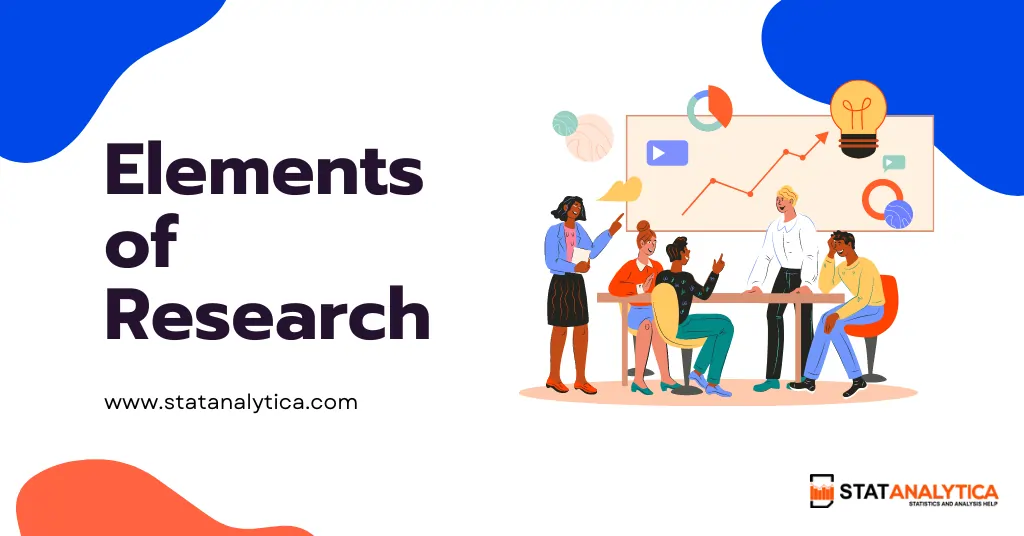
Want to know everything about elements of research, then you are at the right place. Research is an essential part of any academic or scientific endeavor. Whether you are a student writing a thesis, a researcher conducting a study, or a scientist working on a new discovery, research is the foundation of your work. However, conducting research can be a daunting task, especially if you are new to the field.
In this blog, we will explore the key elements of research and provide a guide to help you understand the building blocks of a successful study.
What is Research?
Table of Contents
Research involves a systematic process of proving a relationship between variables. This can be done through statistical methods, qualitative methods or a combination of both.
A good research design must contain a clear statement, techniques for data collection, processing and analysis.
Elements of Research: Important, Elements, Conducting & More
Here in this section you get to know about elements of research: Important, Elements, Conducting & More:
Why is Research Important?
If you want to know the Elements of Research then you must first know why Research is important. Then here are some reasons why research is important which are as follows:
1. Advancing Knowledge
Research helps to advance knowledge by generating new ideas, theories, and concepts. It helps to build on existing knowledge and expand our understanding of the world.
2. Solving Problems
Research is used to solve problems and to find solutions to complex issues. It helps to identify the root causes of problems and to develop effective strategies for addressing them.
3. Informing Decision-Making
Research provides valuable information that can be used to inform decision-making. It helps to identify the potential risks and benefits of different courses of action, and to determine the most effective approach to solving problems.
4. Improving Quality Of Life
Research has the potential to improve the quality of life for individuals and communities. It can lead to the development of new technologies, medicines, and treatments, and can help to address social and environmental issues.
5. Economic Development
Research can contribute to economic development by driving innovation, creating new jobs, and generating new industries. It can help to create a more competitive and dynamic economy.
6. Personal Growth
Conducting research can also contribute to personal growth by providing opportunities for learning, developing new skills, and gaining a deeper understanding of a particular subject.
The Elements of Research – Things You Need To Know
Here in this section we will tell you some of the elements of research that you must know:
Research is a systematic process of finding evidence to support a knowledge claim. It involves a variety of methods, including observation, experimentation and logical reasoning, which are used to gather data.
Researchers work to develop new concepts and ideas that are relevant, useful and practical. They also explore gaps in current knowledge to identify needs for more research and improve how people think about a problem.
There are a few different types of research, which can be classified into basic and applied research. Fundamental research aims to understand the reasons behind something, whereas applied research seeks to find solutions to problems and create commercially viable applications.
Both methods are based on a systematic approach to capture accurate data. Researchers must practice a code of conduct and follow ethical guidelines to ensure that their research is valid and reliable. This is why it is so important to make sure that all of the data collected has been accurately analyzed and there are no anomalies in the results. This is the first elements of research.
2. Variable
A variable is an element of research that can be measured, manipulated or controlled. It can be any property or characteristic that changes over time, can be a number or can take on different values (such as height, age, temperature or test scores).
In experiments, independent and dependent variables are manipulated to test causal relationships between them. In an experiment where you give one group of people an active drug and another group a placebo, the dependent variable is the response of each person to the drug.
The independent variable is the one you manipulate in the experiment to test its effect on the dependent variable. It’s called an independent variable because it’s not affected by other factors that are being measured in your experiment.
In a study where you want to see how the amount of fertilizers affects plant growth, the independent variable is the amount of fertilizers. The dependent variable is the plant’s growth.
3. Hypothesis
A hypothesis is a statement that explains the predictions and reasoning of your research–an “educated guess” about how your scientific experiments will end. It is the foundation of your research, which should be as clear, specific and testable as possible.
A research hypothesis can be either simple or complex. A simple hypothesis looks at a relationship between an independent variable and a dependent variable, while a complex hypothesis explores the effects of multiple variables on each other.
In science, researchers often use a null hypothesis to confirm if the results of an experiment are due to chance or if they support a theory. A null hypothesis states that no relationship exists between two variables, and any changes that occur when the independent variable is manipulated are not due to chance.
A researcher can also choose an alternative hypothesis to narrow down the relationship between the independent and dependent variables. This is called deductive research.
4. Operational Definition
The operational definition of research is a detailed specification of how you will go about measuring a variable. It includes what instrument you will use, how you plan to interpret the data and how you will make comparisons.
A good operational definition will eliminate ambiguity, ensure consistency and reduce measurement errors. It will also be consistent with the theoretical constructs being studied and the methodology used in the study.
For example, if a researcher wants to measure the relationship between age and substance abuse they would define their variable as age measured in years.
Similarly, if they want to measure the relationship between hot weather and violent crime they would define their variable as temperature.
It’s important to have an operational definition of a concept because it helps other researchers to understand the method you used in your study and makes it more replicable. It also helps to avoid misinterpreting your findings, which can lead to erroneous conclusions and poor outcomes. This is the last elements of research.
- Accounting Research Topics
- How To Write a Statistical Research Paper
Ways of Conducting Research?
After knowing the elements of research now you have to know the ways to conduct research. On the other hand, there is a systematic approach to be adopted while conducting research. It involves the following:
1. Defining the Research Problem
The first step in conducting research is to identify the research problem. The research problem is the question or issue that you want to investigate. It should be clearly defined and focused, so that you can design a study that will provide meaningful results. To identify the research problem, you need to start by asking questions about the topic you want to investigate. These questions should be open-ended and designed to help you explore the issue in depth.
Once you have identified the research problem, you can start to develop a research question. The research question should be specific and focused, and should outline the main objective of your study. It should also be clear and concise, so that it can be easily communicated to others.
2. Reviewing the Literature
Before you start to design your study, you need to conduct a literature review. A literature review is a comprehensive analysis of the existing research on your topic. It involves identifying and analyzing relevant literature, including books, articles, and other sources of information.
The purpose of a literature review is to identify the gaps in the existing research and to determine the most effective research methods to use in your study. It also helps you to refine your research question and to develop hypotheses that can be tested in your study.
3. Designing the Study
Once you have identified the research problem and reviewed the literature, you can start to design your study. The study design is the blueprint for your research, and it outlines the methods and procedures that you will use to collect and analyze data.
There are several different types of study designs, including experimental studies, observational studies, and surveys. The type of study design that you choose will depend on the research question, the available resources, and the nature of the data that you want to collect.
4. Collecting Data
The next step in conducting research is to collect data. There are several different methods that you can use to collect data, including surveys, interviews, observations, and experiments. The method that you choose will depend on the nature of your research question and the type of data that you want to collect.
When collecting data, it is important to ensure that the data is accurate and reliable. This involves using appropriate sampling methods, ensuring that the data is collected in a consistent manner, and taking steps to minimize bias and error.
5. Analyzing the Data
Once you have collected the data, you need to analyze it. Data analysis involves examining the data to identify patterns, trends, and relationships. There are several different methods that you can use to analyze data, including descriptive statistics, inferential statistics, and qualitative analysis .
The method that you choose will depend on the nature of your research question and the type of data that you have collected. It is important to use appropriate statistical techniques and to ensure that the results are reliable and valid.
6. Reporting the Results
The final step in conducting research is to report the results. The purpose of reporting the results is to communicate the findings of your study to others. This involves writing a research report that outlines the research question, the methods that were used, the results that were obtained, and the conclusions that were drawn.
The research report should be written in a clear and concise manner, and should be organized in a logical and coherent manner. It should also be accompanied by appropriate tables, graphs, and figures to enhance the clarity and visualization of the results. Additionally, the research report should include a discussion section that interprets the results and discusses their implications.
It is important to use appropriate language and to avoid making unsupported claims. The research report should also include a reference list that provides a complete list of the sources that were used in the study.
7. Ethical Considerations in Research
When conducting research, it is important to consider ethical issues. Ethical considerations involve ensuring that the rights and welfare of research participants are protected, and that the research is conducted in a responsible and ethical manner.
Some of the key ethical considerations in research include obtaining informed consent from participants, maintaining confidentiality, minimizing risks to participants, and ensuring that the benefits of the research outweigh any potential harms.
In addition, researchers should be aware of potential conflicts of interest and should disclose any conflicts of interest to ensure that the research is conducted in an impartial and unbiased manner.
Ways How To Find And Use Research Resources
Here are some ways to find and use research resources:
1. Start With Your Library
Your library is a great place to find research resources, including books, articles, databases, and websites. The librarians at your library can help you find the resources you need and teach you how to use them.
2. Use Online Databases
Many online databases provide access to scholarly articles, books, and other research materials. Some of these websites are free to use, but you have to pay to use the others.
3. Search The Web
You can also find research resources on the web. However, it is important to be critical of the information you find online, as not all websites are created equal.
4. Talk To Experts
If you are stuck, talk to experts in your field. They may be able to point you to helpful resources or provide you with insights that you would not have found on your own.
5. Use Social Media
Social media can be a great way to connect with experts in your field and find research resources. Many experts have their own blogs or Twitter accounts where they share their research and insights.
6. Attend Conferences
Conferences are a great way to learn about new research and meet experts in your field. You can also find research resources such as books, articles, and posters at conferences.
7. Use Government Websites
Government websites can be a great source of research resources. Many government agencies publish reports, studies, and data that can be helpful for research projects.
Tips For Writing Effective Research Paper In 2023
Here are some tips for writing effective research paper in 2023 :
1. Choose A Topic That You Are Interested In And That You Know Something About
This will make it easier and more fun to study. When choosing a topic, it is important to consider your interests, your skills, and your knowledge. You should also consider the length and scope of the paper you must write.
2. Do Your Research Thoroughly
This means reading a variety of sources and carefully evaluating their credibility. When doing your research, it is important to use a variety of sources, including books, articles, websites, and interviews. You should also be critical of your sources and evaluate their credibility.
3. Take Notes On Your Research
This will help you to keep track of your findings and to organize your thoughts. When taking notes, it is important to be selective and only to include the most important information. You should also organize your notes in a way that makes sense to you.
4. Write An Outline For Your Paper
This will help you to structure your paper and to make sure that all of your points are covered. When writing an outline, it is important to include an introduction, a body, and a conclusion. You should also include subheadings to help organize your thoughts.
5. Write A Strong Introduction
Your introduction should grab the reader’s attention and introduce the topic of your paper. A strong introduction should include a clear thesis statement, which is a sentence that states the main point of your paper.
6. Write A Clear And Concise Body Text
Your body text should present your findings and arguments logically and easily. When writing the body of your paper, it is important to use evidence to support your claims. You should also use transition words to help guide your reader through your argument.
7. Write A Strong Conclusion
Your conclusion should clarify your thesis statement and proceed over your important points. A strong conclusion should also leave the reader with something to think about.
8. Proofread Your Paper Carefully
This will help you find any mistakes in writing, grammar, or punctuation. When proofreading your paper, it is helpful to read it aloud. This will help you find errors you might not have noticed otherwise.
Conducting research can be a challenging and complex process. However, by understanding the key elements of research, you can develop a successful study that provides meaningful results. The key elements of research include defining the research problem, reviewing the literature, designing the study, collecting data, analyzing the data, and reporting the results.
Additionally, it is important to consider ethical issues when conducting research to ensure that the rights and welfare of research participants are protected. By following these guidelines, you can conduct research that makes a valuable contribution to your field of study.
Q 1. Why is defining the research problem important?
Defining the research problem is essential because it sets the direction and focus of the study. It helps researchers stay on track and investigate a specific issue effectively.
Q 2. What is the importance of a literature study in research?
The literature review is important as it provides an overview of existing knowledge on the research topic. It helps researchers identify gaps, build on previous work, and ensure their study is relevant and contributes to the existing body of knowledge.
Related Posts

Step by Step Guide on The Best Way to Finance Car

The Best Way on How to Get Fund For Business to Grow it Efficiently
- Grades 6-12
- School Leaders
Check Out Our 32 Fave Amazon Picks! 📦
21 Fascinating Periodic Table Activities for Chemistry Students of All Ages
Proving that fun is elemental to learning!
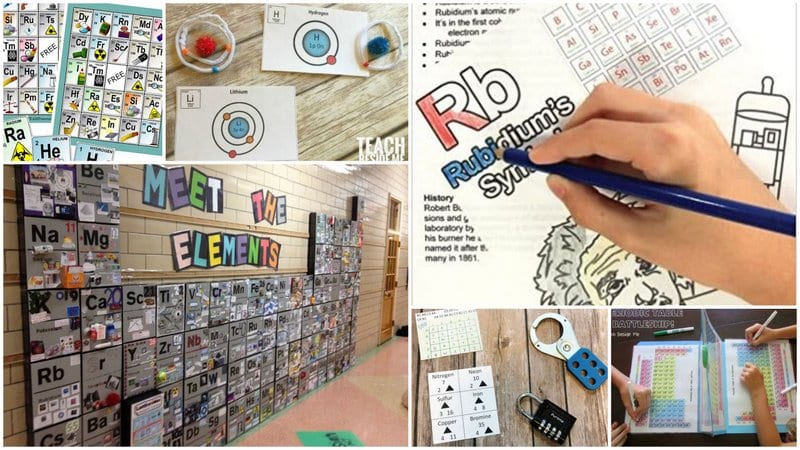
The periodic table of elements is key to understanding and mastering chemistry concepts. These periodic table activities are fun and engaging, and you can use many of them with both younger and older students. Pick a few to try in your own classroom!
Just a heads up, WeAreTeachers may collect a share of sales from the links on this page. Thank you for your support!
1. Start with an anchor chart
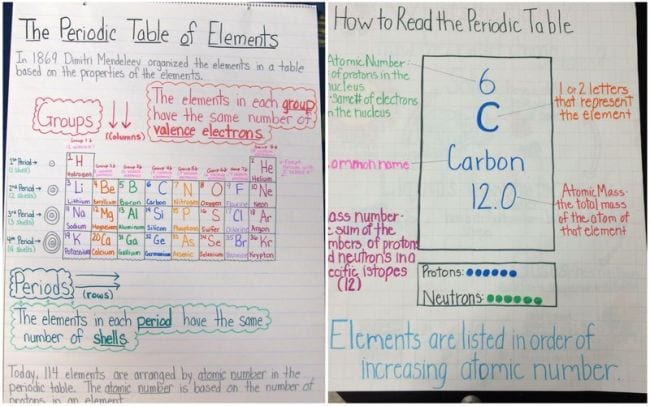
The periodic table is an ingenious construction, but it takes a little explaining. These anchor charts explain the layout and details and are excellent references to use throughout all your periodic table activities.
Learn more: Scholastic
2. Explore an illustrated periodic table chart
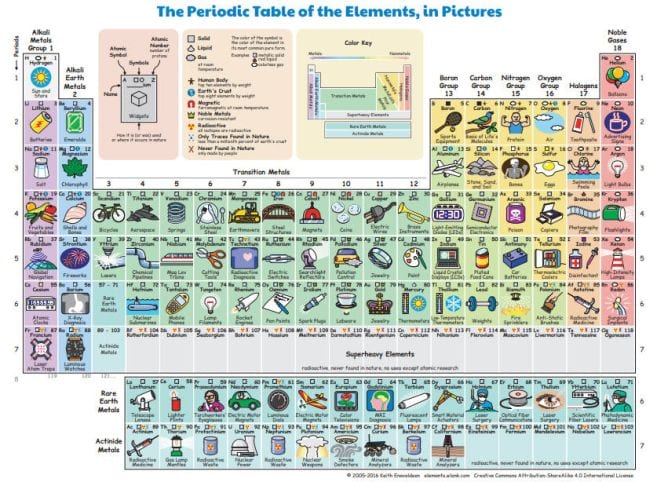
Teachers love this chart, and for good reason. It brings the table to life, helping chemistry students understand the role each element plays in the world around us. You can print copies of it for free, or buy posters and card sets. There’s even an interaction version !
Learn more: elements.wlonk.com
3. Color and learn about the elements
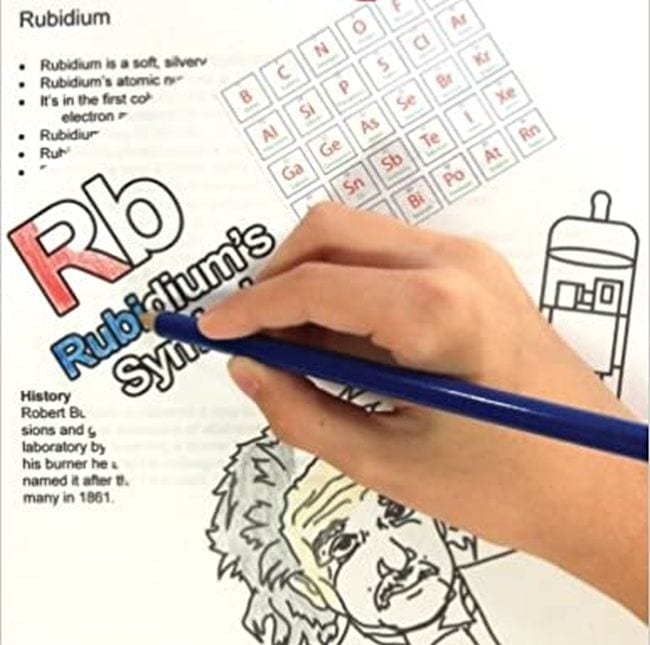
You can use this clever coloring book for all kinds of periodic table activities. Try a few free printable pages from author Teresa Bondora’s site here . If you like them, buy The Periodic Table of Elements Coloring Book on Amazon .
[contextly_auto_sidebar]
4. Sing a periodic table song
Though kids don’t necessarily need to memorize the periodic table, songs like this one can help if they want to try! We love this new up-to-date take, but the old Tom Lehrer classic from 1959 is lots of fun too .
5. Build a model using egg cartons

Love a good recycled craft project? This is the activity you’re looking for! Save up egg cartons and use them to build a periodic table model.
Learn more: Weird Unsocialized Homeschoolers
6. Create an elements card deck
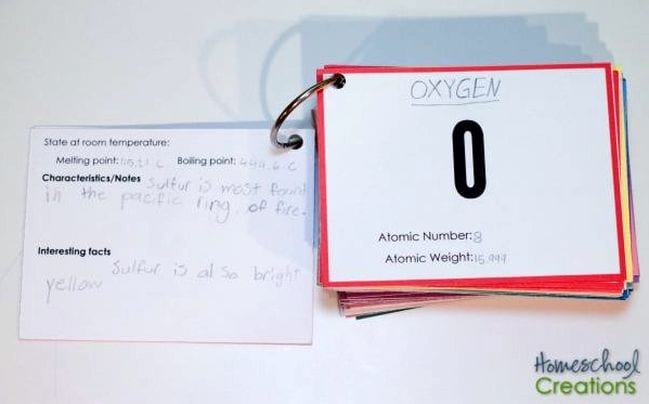
These free printable cards are terrific for reviewing the elements, especially if you’re working on memorizing some or all of them.
Learn more: Homeschool Creations
7. Make pipe cleaner element models
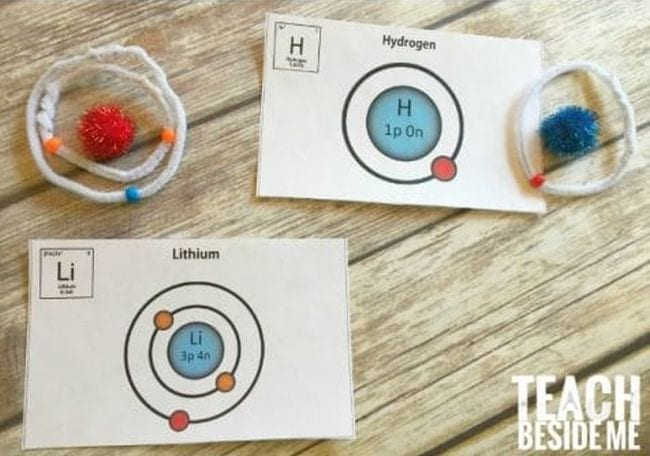
Gain a deeper understanding of the construction of each element by making models with pom poms, beads, and pipe cleaners.
Learn more: Teach Beside Me
8. Find the elements to win the game
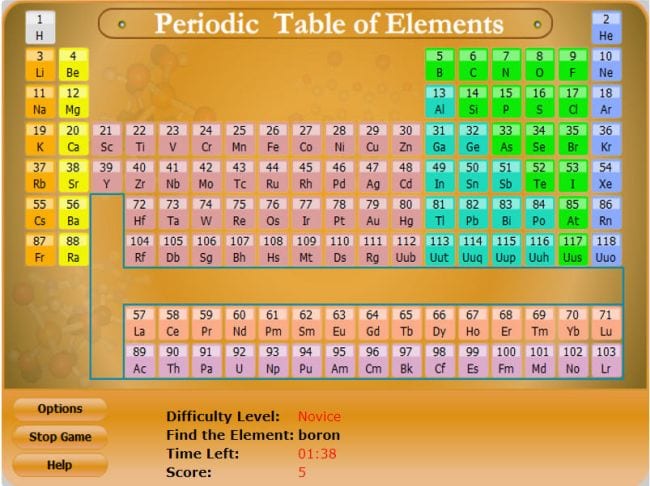
Familiarize yourself with where each element is located on the table, along with their abbreviations, with this simple (and free) point-and-click computer game.
Learn more: Mr. Nussbaum Learning + Fun
9. Go on an elements scavenger hunt
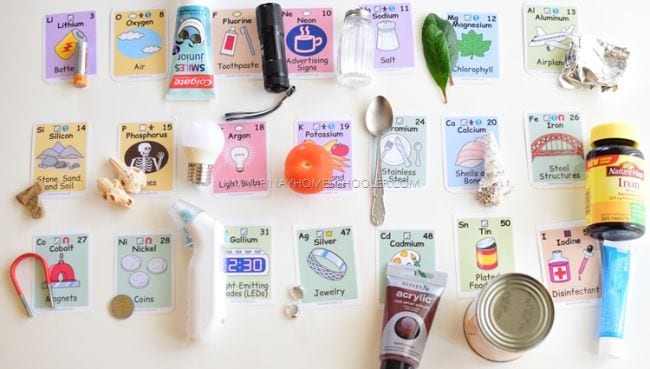
Send students on a search for real-life examples of the various elements. They’ll be surprised at how easy it is to find so many of them.
Learn more: Pinay Homeschooler
10. Make a periodic table of giant tiles
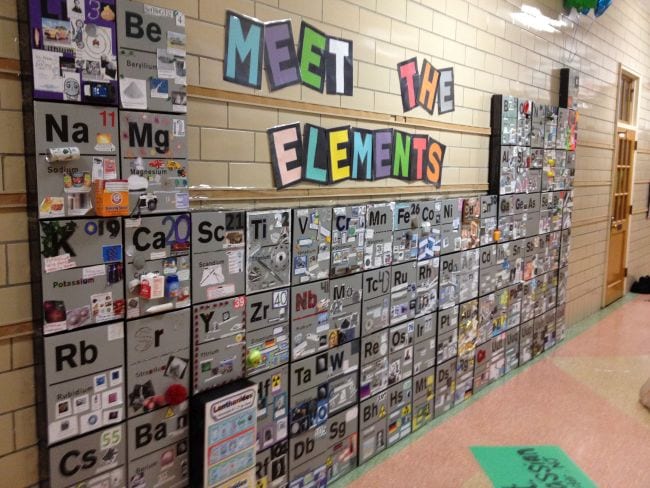
This classic research project comes together in a giant periodic table display. You can use poster board, or add a 3-D element by creating the tiles on pizza boxes instead.
Learn more: missmiklius
11. Play periodic table Battleship
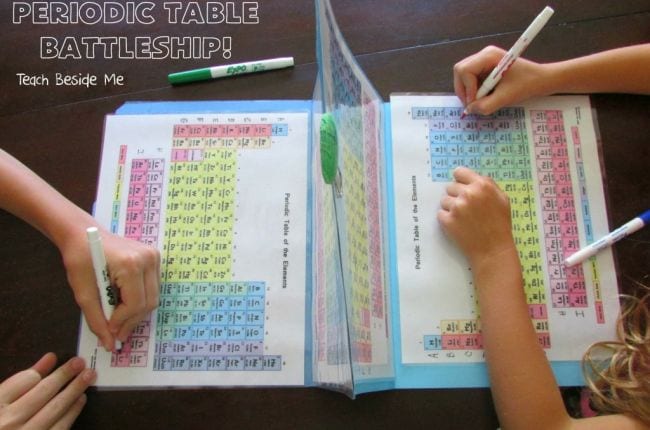
Here’s another fun game to help familiarize kids with where various elements are found on the table. Learn how to play at the link.
12. Turn elements into superheroes (or villains)
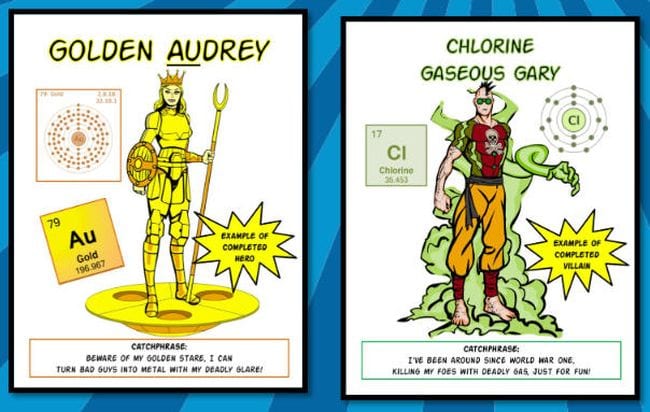
This is such a fun twist on the usual element research project. Students learn more about the characteristics of their element, then decide whether it’s a superhero—or a villain!
Learn more: Morpho Science/Teachers Pay Teachers
13. Download the Atomidoodle app
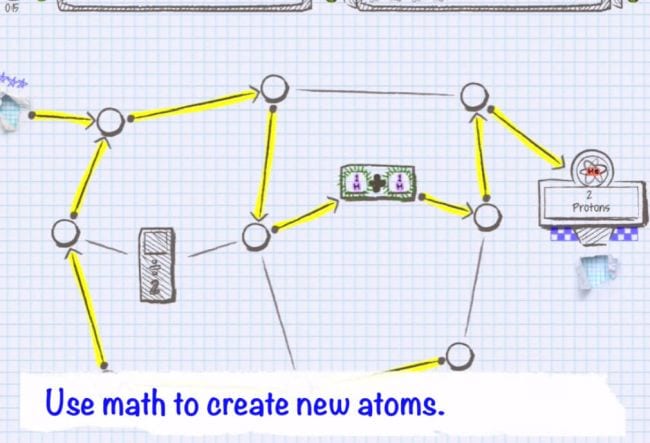
This cool little app, available on both the Apple AppStore and Google Play, challenges students to draw paths through mazes. They use fusion (addition) and fission (division) to create new atoms, all while learning hundreds of facts about the elements.
Learn more: Atomidoodle
14. Sort “periodic people” into a table
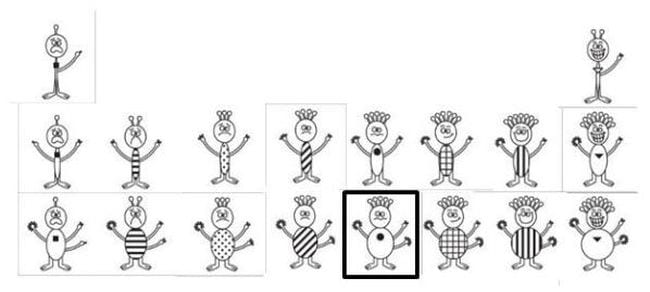
This clever activity gives students the chance to see how Mendeleev sorted the elements to create his brilliant periodic table. Get it for free at the link.
Learn more: Sunrise Science
15. Put the periodic table on your ceiling
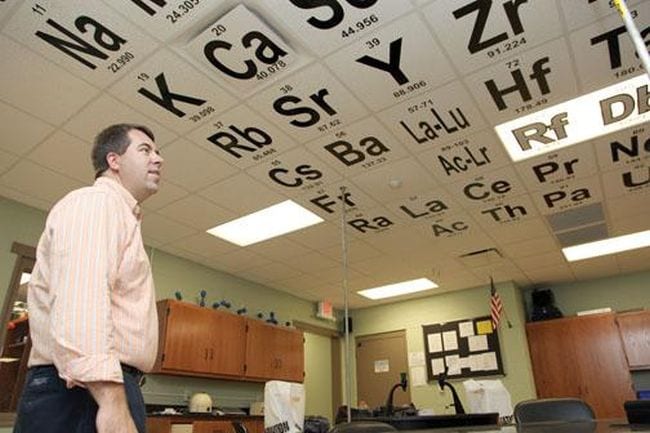
Source: Jackson County Sentinel
Make use of every last bit of your classroom space by turning ceiling tiles into an enormous periodic table! Adhesive vinyl works well for this ambitious project.
16. Solve The Mystery of the Periodic Table
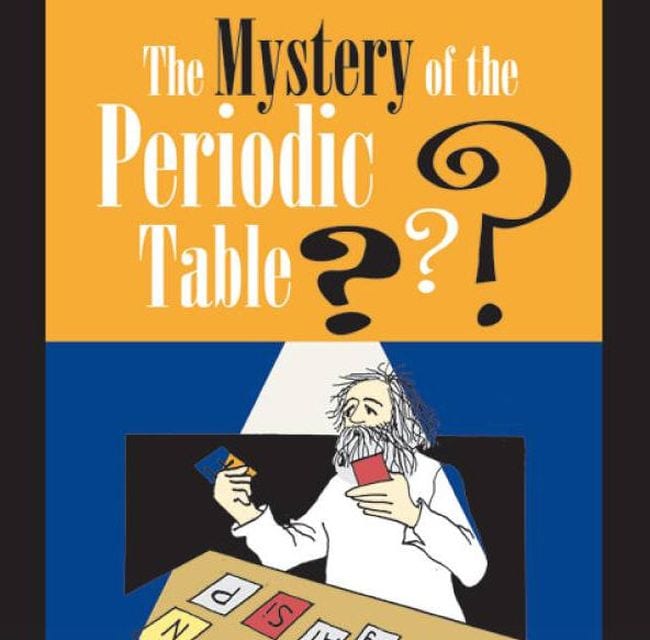
Middle school readers will enjoy this tale of the development of the periodic table, learning about the various scientists involved along the way. Buy The Mystery of the Periodic Table on Amazon here.
17. Get to know the Element characters
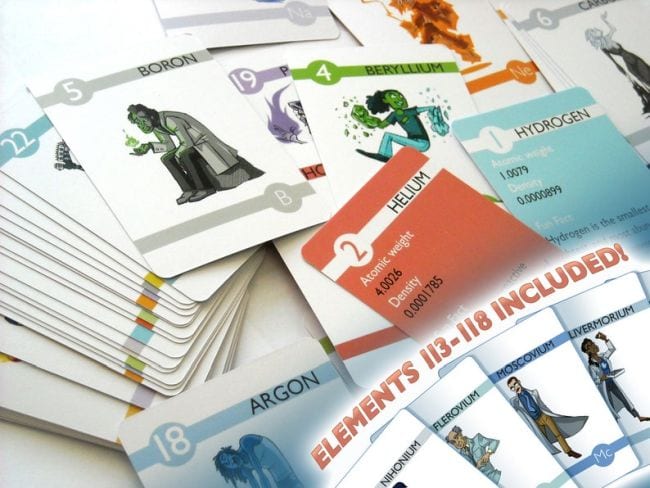
Each element has its own set of characteristics that could almost be called its personality. That’s the idea behind these incredibly fun cards, which imagine the elements as living characters. You could use a set of these for all kinds of periodic table activities.
Learn more: Elements—Experiments in Character Design
18. Defeat a periodic table escape room
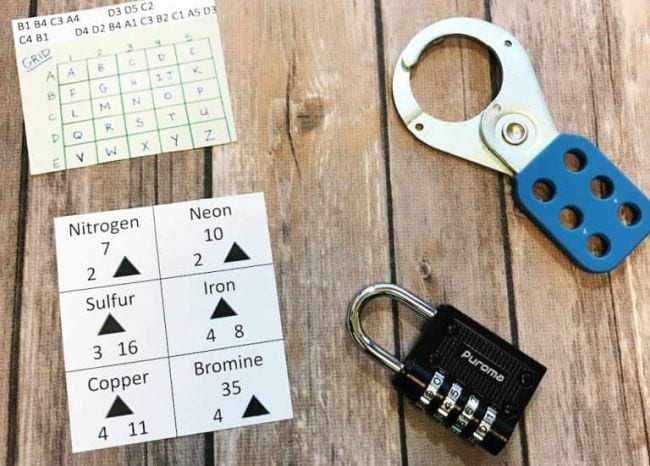
Escape rooms are all the rage, and they’re a lot of fun in the classroom too. Create your own set of chemistry-based challenges, or buy this ready-to-go periodic table escape room on Teachers Pay Teachers.
Learn more: Kesler Science
19. Make periodic table pixel art
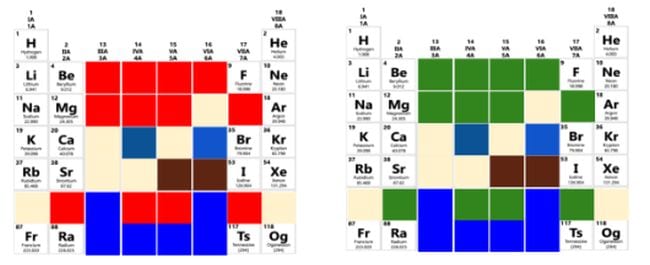
In this free interactive program, students answer questions about the elements to unlock squares on the periodic table, creating a pixel picture. Bonus: Have kids create their own pixel pics using the table!
Learn more: Teaching Above the Test
20. Put together colorful tiles
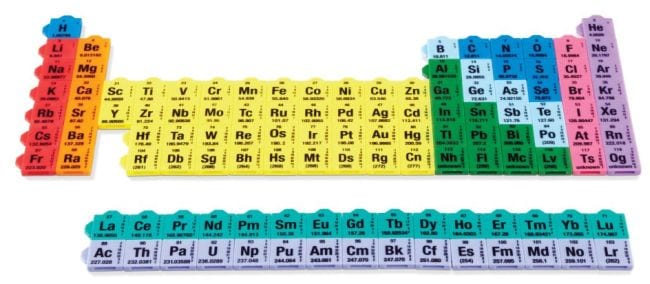
These colorful pieces interlock to create an interactive puzzle you can use for lots of different periodic table activities. Buy the set at Amazon.
21. Compete at periodic table Bingo
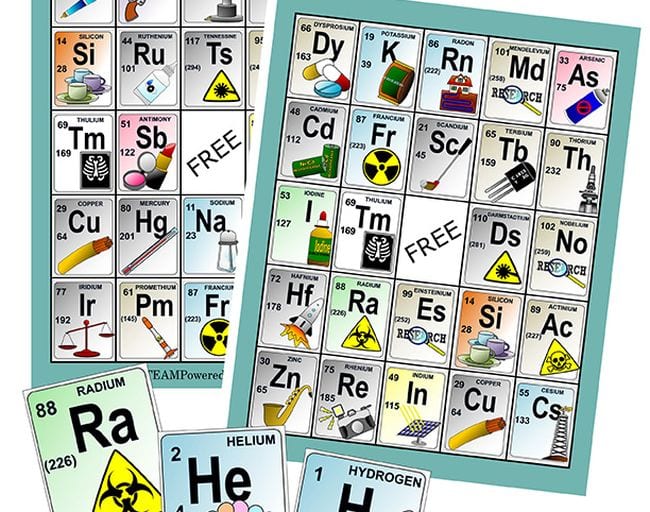
Bingo is always fun, but this version helps you learn the various abbreviations of the elements too. Make your own cards, or buy a pre-made set at the link.
Learn more: STEAM Powered Family
Want more hands-on science? Try the Best Science Kits for Kids, As Chosen by Teachers .
Plus, 20 of the Best Science Bulletin Boards and Classroom Decor Ideas .
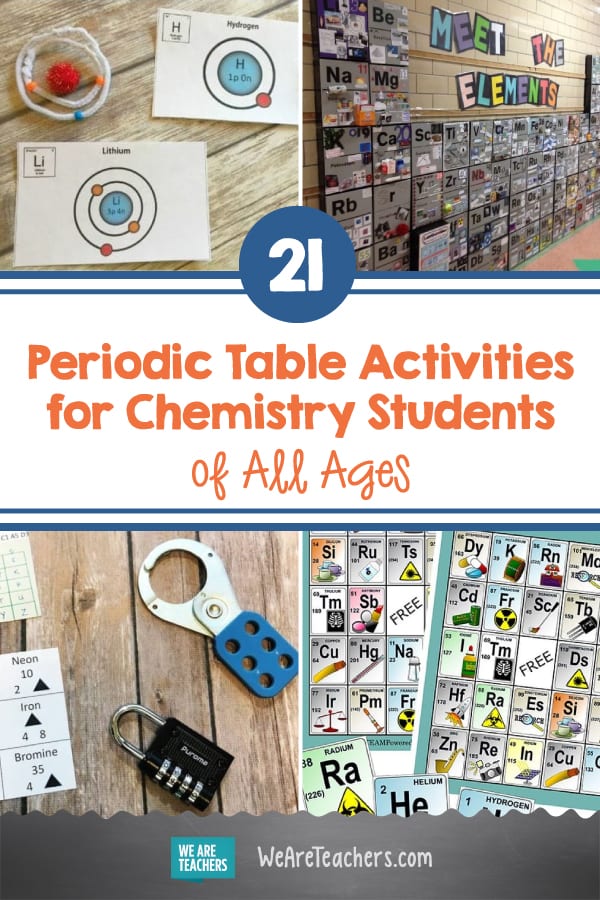
You Might Also Like
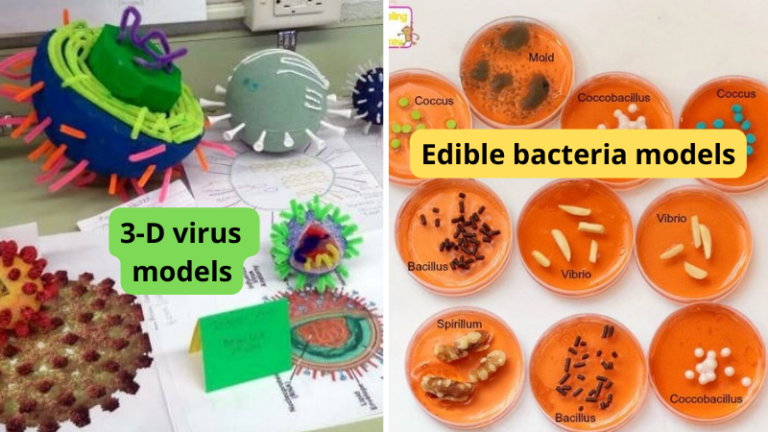
The 10 Best K-5 Science Projects for Learning About Germs
Go hands on to learn why we need to keep our hands clean! Continue Reading
Copyright © 2024. All rights reserved. 5335 Gate Parkway, Jacksonville, FL 32256
Plugged In: For UMaine Extension Staff and Volunteers
Elements of a research project or proposal: questions to consider.
Introduction: Problem or Question
- What exactly do you want to study?
- What is your research question or questions?
- Why is it worth studying?
- What is the purpose or significance of your study?
- Does the proposed study have practical significance?
- How are you defining your terms?
- What are the limitations of your study?
- What is the researcher’s perspective or viewpoint?
Literature Review
- What have others said about this topic?
- What theories address it and what do they say? What research has been done previously?
- Are there consistent findings or do past studies disagree?
- Are there flaws in the body of existing research that you feel you can remedy?
Methods & Subjects
- What inquiry approach are you using?
- Will you conduct an experiment or survey?
- Will you undertake field research, or are you going to focus on the reanalysis of statistics already created by others?
- What is the setting for the research?
- Who or what will you study in order to collect the data?
- Who are the subjects in general and who is available for study? How will you reach them?
- Will it be appropriate to select a sample? If so, how will you do that?
- If there is any possibility that your research will have an impact on those you study, how will you ensure that they are not harmed by the research?
Measurement
- What are the key variables in your study?
- How will you define and measure them?
- Do your definitions and measurement methods duplicate or differ from those of previous research on this topic?
- Are you developing your measurement device (for example, questionnaire) or will you be using something previously developed by others?
- When developing a measurement device to measure your study group, how will you determine the validity of the instrument?
- For existing instruments, how do you know it is valid for your sample and how will you establish reliability for your sample? (Reliability should always be reported for the study sample, not the development samples reported in manuals.)
Data Collection
- How will you actually collect the data for your study (observation, interviews, document analysis, focus group, photography and video, etc.)?
Data Analysis
- What kind of analysis do you plan to conduct?
- What is the purpose and logic of your analytical approach? Are you interested in precise description?
- Do you intend to explain why things are the way they are? Do you plan to account for variations in some quality (for example, why are some students more liberal than others)?
- What possible explanatory variables will your analysis consider, and how will you know if you’ve explained the variables adequately?
- How can you verify and establish the trustworthiness of your study?
Scholarly Work
- How will this research lead to scholarly work?
- What level of scholarly work makes sense?
- What is your end goal?
- What are the avenues for presenting or sharing your research findings?
- Where do you want to share your work?
- What did you learn?
- What worked and what didn’t?
- How does your data answer or inform your research question(s)?
Conclusions & Recommendations
- How can you apply or use what you learned?
- How might others use it?
- What were the limitations of your research?
- What implications are there for further research?
If you are writing a research proposal, include:
- Schedule – provide a schedule for the various stages of research (this is good to do for any project).
- Budget – If you are asking someone to give you money to pay the costs of your research, you will need to provide a budget specifying where the money will go. Large, expensive projects include budgetary categories such as personnel, equipment, supplies and expenses such as telephones and postage. Even for a more modest project which you will pay for yourself, it’s a good idea to spend some time anticipating any expenses involved: office supplies, photocopying, computer disks, telephone calls, transportation, and so on.
Source: Babbie, E. (1992). The Practice of Social Research , Sixth Edition. Belmont, CA: Wadsworth Publishing Company; Creswell, J.W. (1998). Qualitative Inquiry and Research Design: Choosing Among Five Traditions . Thousand Oaks, CA: Sage Publications; Patton, M.Q. (1990). Qualitative Evaluation and Research Methods . Newberry Park, CA: Sage Publications.
Excerpted and adapted from Lisa Phelps and Judith Graham, Elements of a Social Research Report or Proposal: Questions to Consider (2002).
- You are here:
- American Chemical Society
- Students & Educators
- Explore Chemistry
- Periodic Table
- Periodic Table Educational Resources for Ages 15–18
Periodic Table Educational Resources for Ages 15-18
Youtube ID: ipzFnGRfsfE
Youtube ID: 66SGcBAs04w
Periodic Table Trends Activity Download , print, and cut the cards you need to do this activity. Then watch the instructional video (in English or en Español) to learn how to play.
Youtube ID: 3-izAsCGCzQ
Youtube ID: Ceb90BpYlas
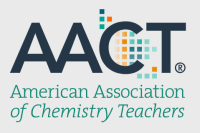
High School Classroom Activities Browse chemistry classroom resources from the American Association of Chemistry Teachers.
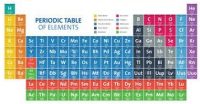
Periodic Table Activities Want to learn more about this centerpiece of chemistry? Take your pick from this collection of links about elements and the periodic table! Build an element ball, solve periodic puzzles, and check out some of the most unusual periodic tables you’ve ever seen.
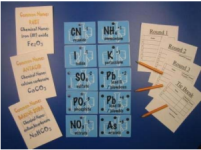
The Chemistry Name Game As students play the Chemistry Name Game, they will learn why compounds form as they do. They will also learn how to correctly name chemical compounds and write chemical formulas.
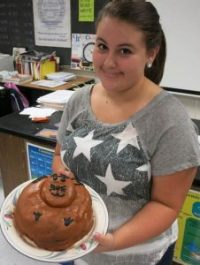
Mole Day Activities Celebrated annually on October 23 from 6:02 a.m. to 6:02 p.m., Mole Day commemorates Avogadro's Number (6.02 x 10 23 ), which is a basic measuring unit in chemistry. Find ways to celebrate this chemistry holiday!
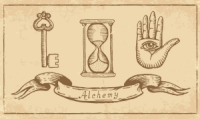
Alchemy Activities A main goal of many alchemists of the past was to turn lead into gold. This collection of links explores the history of alchemy, the connection of alchemy to modern day chemistry, and some fun activities to experience a taste of the alchemist’s life.
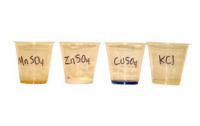
Metal Ligand Activity - Connections with Forensics This activity is integrated into a crime scene investigation, in which dirt is found under each suspect’s shoe. Each dirt sample is then compared to dirt found at the crime scene. Spraying Windex onto the samples produces a color that depends on the metal residing in the dirt. By comparing colors across samples, we might be able to determine the real culprit.

Cleaning Up With Atom Economy The green chemistry principle of atom economy applies to chemical reactions, and minimizes waste down to the molecular level. This exercise uses molecular models to calculate atom economy for a saponification reaction.
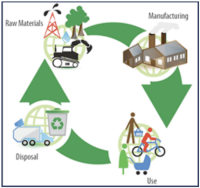
Green Chemistry Test Questions Green chemistry high school test questions
Graphics and Videos
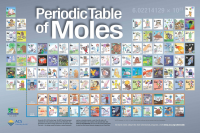
Periodic Table of Moles As part of the ChemClub's 10 th Anniversary, we asked clubs to create elements of the periodic table featuring a mole.
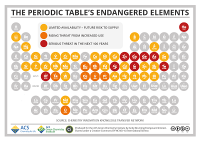
Endangered Elements Infographic The Period Table of Endangered Elements presents elements facing supply restrictions in the coming years. The research was conducted by the Chemical Innovation Knowledge Transfer Network.
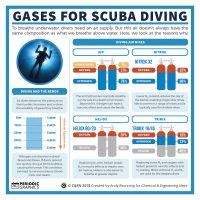
Periodic Graphics A monthly collaboration between C&EN and Andy Brunning, chemistry educator and author of the popular graphics blog Compound Interest.

Download an Updated Periodic Table from ACS Publications Is the periodic table hanging in your lab, classroom, or office woefully out of date? Replace that old relic with a free updated periodic table from ACS Publications!
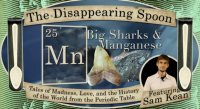
Big Sharks and Manganese In this video, Sam Kean tells stories about manganese.
Lesson Plans

Unit Plan: The Periodic Table This unit plan from the American Association of Chemistry Teachers has everything you need to put together a unit plan for your classroom: lessons, activities, labs, projects, videos, simulations, and animations. We constructed a unit plan using AACT resources that is designed to teach the Periodic Table to your students.
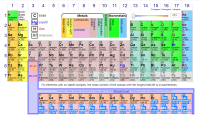
Ptable.com Investigations In this activity, students will use the online periodic table, ptable.com , to investigate a number of chemistry concepts. Students will use this online resource to explore information about the elements, including historical data, physical properties, periodic trends and more.

Exploring Elements In this project, students will select an element and then use Ptable.com to explore aspects of the element including its periodicity, electron configuration, history, and uses in industry.
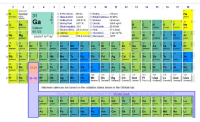
Q&A with Michael Dayah Recently, Chemistry Solutions caught up with Michael Dayah, creator of ptable.com — one of the first online periodic tables. We asked him to share his story about how he created ptable.com as a high school chemistry student, and how he’s updated it since then to support teachers in more recent years.

Chemical Landmark Lesson Plan: Discovery of Oxygen Discover how chemistry was practiced during Joseph Priestley’s time (1733-1804), developments leading to the discovery of oxygen, the historical context of scientific discoveries made at this time, and related developments in chemistry that took place during the late 1700s and early 1800s.

Chemical Landmark Lesson Plan: Development of Baking Powder Gain insight into the history and chemistry featured in the development of baking powder.
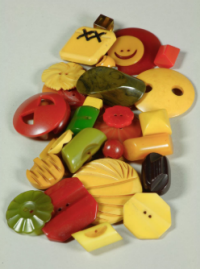
Chemical Landmark Lesson Plan: Man and Materials Through History Learn about connection between materials science and cultural and technological developments, specifically relating to the development of the world’s first synthetic plastic, Bakelite ® .
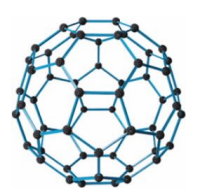
Chemical Landmark Lesson Plan: Discovery of Fullerenes Learn about the fascinating chemistry of fullerenes and the events that led to their discovery.
Safety & Guidelines

Guidelines for Chemical Laboratory Safety in Secondary Schools These guidelines were developed to help high school teachers in all science subjects to progressively increase their understanding of best practices to ensure the safety of their students and themselves in the scientific learning experience. It is hoped that these guidelines will help teachers to nurture a culture of science safety early in students’ academic and professional careers. It is also hoped that these guidelines will prepare teachers to handle any incident or emergency situation that might arise in the science classroom or laboratory..

Guidelines and Recommendations for Teaching Middle & High School Chemistry Learn to navigate the core concepts of chemistry based on recommended standards for middle school and high school students. Chemistry lessons often include hands-on activities in the lab. ACS gives you a variety of tools to ensure your learning spaces, lesson plans, and materials are safe for you and your students. These strategies are written specifically for chemistry teachers and address the challenges of helping students reach their fullest potential in chemistry.
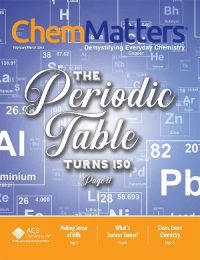
ChemMatters Magazine
ChemMatters is a magazine that helps high school students find connections between chemistry and the world around them.
Featured articles:
- The Periodic Table Turns 150
- The Many Looks of the Periodic Table
- The New Alchemy
Artículos en Traducidos Español
Accept & Close The ACS takes your privacy seriously as it relates to cookies. We use cookies to remember users, better understand ways to serve them, improve our value proposition, and optimize their experience. Learn more about managing your cookies at Cookies Policy .
1155 Sixteenth Street, NW, Washington, DC 20036, USA | service@acs.org | 1-800-333-9511 (US and Canada) | 614-447-3776 (outside North America)
- Terms of Use
- Accessibility
Copyright © 2024 American Chemical Society

Module 3: Elements of Research

By the end of this module, you will be able to:
- Explain how associations between variables are used to answer research questions.
- Explain why random assignment and random selection are used in research.
- Explain why some information about a research study cannot be told to a research participant.
An understanding of the basic elements of research is essential for good research practices. Among the most important elements to be considered are variables, associations, sampling, random selection, random assignment, and blinding. For a more detailed explanation of other research concepts, please see the list of references provided at the end of this curriculum.

Email Updates
Redland Middle School

Elements Research Project
For this project, you will be researching an element from the Periodic Table. CLICK HERE to download a copy of the project description.
Online Encyclopedias
World Book Online
Encyclopaedia Britannica
Website Resources
Los Alamos National Laboratory's Chemistry Division
Royal Society of Chemistry
Radiochemistry Society Periodic Table
Jefferson Lab
Chemical Elements
Chemicool
Fact Monster Periodic Table
Lenntech Periodic Table
The Photographic Periodic Table
Have a language expert improve your writing
Run a free plagiarism check in 10 minutes, generate accurate citations for free.
- Knowledge Base
Methodology
- What Is a Research Design | Types, Guide & Examples
What Is a Research Design | Types, Guide & Examples
Published on June 7, 2021 by Shona McCombes . Revised on November 20, 2023 by Pritha Bhandari.
A research design is a strategy for answering your research question using empirical data. Creating a research design means making decisions about:
- Your overall research objectives and approach
- Whether you’ll rely on primary research or secondary research
- Your sampling methods or criteria for selecting subjects
- Your data collection methods
- The procedures you’ll follow to collect data
- Your data analysis methods
A well-planned research design helps ensure that your methods match your research objectives and that you use the right kind of analysis for your data.
Table of contents
Step 1: consider your aims and approach, step 2: choose a type of research design, step 3: identify your population and sampling method, step 4: choose your data collection methods, step 5: plan your data collection procedures, step 6: decide on your data analysis strategies, other interesting articles, frequently asked questions about research design.
- Introduction
Before you can start designing your research, you should already have a clear idea of the research question you want to investigate.
There are many different ways you could go about answering this question. Your research design choices should be driven by your aims and priorities—start by thinking carefully about what you want to achieve.
The first choice you need to make is whether you’ll take a qualitative or quantitative approach.
| Qualitative approach | Quantitative approach |
|---|---|
| and describe frequencies, averages, and correlations about relationships between variables |
Qualitative research designs tend to be more flexible and inductive , allowing you to adjust your approach based on what you find throughout the research process.
Quantitative research designs tend to be more fixed and deductive , with variables and hypotheses clearly defined in advance of data collection.
It’s also possible to use a mixed-methods design that integrates aspects of both approaches. By combining qualitative and quantitative insights, you can gain a more complete picture of the problem you’re studying and strengthen the credibility of your conclusions.
Practical and ethical considerations when designing research
As well as scientific considerations, you need to think practically when designing your research. If your research involves people or animals, you also need to consider research ethics .
- How much time do you have to collect data and write up the research?
- Will you be able to gain access to the data you need (e.g., by travelling to a specific location or contacting specific people)?
- Do you have the necessary research skills (e.g., statistical analysis or interview techniques)?
- Will you need ethical approval ?
At each stage of the research design process, make sure that your choices are practically feasible.
Receive feedback on language, structure, and formatting
Professional editors proofread and edit your paper by focusing on:
- Academic style
- Vague sentences
- Style consistency
See an example

Within both qualitative and quantitative approaches, there are several types of research design to choose from. Each type provides a framework for the overall shape of your research.
Types of quantitative research designs
Quantitative designs can be split into four main types.
- Experimental and quasi-experimental designs allow you to test cause-and-effect relationships
- Descriptive and correlational designs allow you to measure variables and describe relationships between them.
| Type of design | Purpose and characteristics |
|---|---|
| Experimental | relationships effect on a |
| Quasi-experimental | ) |
| Correlational | |
| Descriptive |
With descriptive and correlational designs, you can get a clear picture of characteristics, trends and relationships as they exist in the real world. However, you can’t draw conclusions about cause and effect (because correlation doesn’t imply causation ).
Experiments are the strongest way to test cause-and-effect relationships without the risk of other variables influencing the results. However, their controlled conditions may not always reflect how things work in the real world. They’re often also more difficult and expensive to implement.
Types of qualitative research designs
Qualitative designs are less strictly defined. This approach is about gaining a rich, detailed understanding of a specific context or phenomenon, and you can often be more creative and flexible in designing your research.
The table below shows some common types of qualitative design. They often have similar approaches in terms of data collection, but focus on different aspects when analyzing the data.
| Type of design | Purpose and characteristics |
|---|---|
| Grounded theory | |
| Phenomenology |
Your research design should clearly define who or what your research will focus on, and how you’ll go about choosing your participants or subjects.
In research, a population is the entire group that you want to draw conclusions about, while a sample is the smaller group of individuals you’ll actually collect data from.
Defining the population
A population can be made up of anything you want to study—plants, animals, organizations, texts, countries, etc. In the social sciences, it most often refers to a group of people.
For example, will you focus on people from a specific demographic, region or background? Are you interested in people with a certain job or medical condition, or users of a particular product?
The more precisely you define your population, the easier it will be to gather a representative sample.
- Sampling methods
Even with a narrowly defined population, it’s rarely possible to collect data from every individual. Instead, you’ll collect data from a sample.
To select a sample, there are two main approaches: probability sampling and non-probability sampling . The sampling method you use affects how confidently you can generalize your results to the population as a whole.
| Probability sampling | Non-probability sampling |
|---|---|
Probability sampling is the most statistically valid option, but it’s often difficult to achieve unless you’re dealing with a very small and accessible population.
For practical reasons, many studies use non-probability sampling, but it’s important to be aware of the limitations and carefully consider potential biases. You should always make an effort to gather a sample that’s as representative as possible of the population.
Case selection in qualitative research
In some types of qualitative designs, sampling may not be relevant.
For example, in an ethnography or a case study , your aim is to deeply understand a specific context, not to generalize to a population. Instead of sampling, you may simply aim to collect as much data as possible about the context you are studying.
In these types of design, you still have to carefully consider your choice of case or community. You should have a clear rationale for why this particular case is suitable for answering your research question .
For example, you might choose a case study that reveals an unusual or neglected aspect of your research problem, or you might choose several very similar or very different cases in order to compare them.
Data collection methods are ways of directly measuring variables and gathering information. They allow you to gain first-hand knowledge and original insights into your research problem.
You can choose just one data collection method, or use several methods in the same study.
Survey methods
Surveys allow you to collect data about opinions, behaviors, experiences, and characteristics by asking people directly. There are two main survey methods to choose from: questionnaires and interviews .
| Questionnaires | Interviews |
|---|---|
| ) |
Observation methods
Observational studies allow you to collect data unobtrusively, observing characteristics, behaviors or social interactions without relying on self-reporting.
Observations may be conducted in real time, taking notes as you observe, or you might make audiovisual recordings for later analysis. They can be qualitative or quantitative.
| Quantitative observation | |
|---|---|
Other methods of data collection
There are many other ways you might collect data depending on your field and topic.
| Field | Examples of data collection methods |
|---|---|
| Media & communication | Collecting a sample of texts (e.g., speeches, articles, or social media posts) for data on cultural norms and narratives |
| Psychology | Using technologies like neuroimaging, eye-tracking, or computer-based tasks to collect data on things like attention, emotional response, or reaction time |
| Education | Using tests or assignments to collect data on knowledge and skills |
| Physical sciences | Using scientific instruments to collect data on things like weight, blood pressure, or chemical composition |
If you’re not sure which methods will work best for your research design, try reading some papers in your field to see what kinds of data collection methods they used.
Secondary data
If you don’t have the time or resources to collect data from the population you’re interested in, you can also choose to use secondary data that other researchers already collected—for example, datasets from government surveys or previous studies on your topic.
With this raw data, you can do your own analysis to answer new research questions that weren’t addressed by the original study.
Using secondary data can expand the scope of your research, as you may be able to access much larger and more varied samples than you could collect yourself.
However, it also means you don’t have any control over which variables to measure or how to measure them, so the conclusions you can draw may be limited.
Prevent plagiarism. Run a free check.
As well as deciding on your methods, you need to plan exactly how you’ll use these methods to collect data that’s consistent, accurate, and unbiased.
Planning systematic procedures is especially important in quantitative research, where you need to precisely define your variables and ensure your measurements are high in reliability and validity.
Operationalization
Some variables, like height or age, are easily measured. But often you’ll be dealing with more abstract concepts, like satisfaction, anxiety, or competence. Operationalization means turning these fuzzy ideas into measurable indicators.
If you’re using observations , which events or actions will you count?
If you’re using surveys , which questions will you ask and what range of responses will be offered?
You may also choose to use or adapt existing materials designed to measure the concept you’re interested in—for example, questionnaires or inventories whose reliability and validity has already been established.
Reliability and validity
Reliability means your results can be consistently reproduced, while validity means that you’re actually measuring the concept you’re interested in.
| Reliability | Validity |
|---|---|
| ) ) |
For valid and reliable results, your measurement materials should be thoroughly researched and carefully designed. Plan your procedures to make sure you carry out the same steps in the same way for each participant.
If you’re developing a new questionnaire or other instrument to measure a specific concept, running a pilot study allows you to check its validity and reliability in advance.
Sampling procedures
As well as choosing an appropriate sampling method , you need a concrete plan for how you’ll actually contact and recruit your selected sample.
That means making decisions about things like:
- How many participants do you need for an adequate sample size?
- What inclusion and exclusion criteria will you use to identify eligible participants?
- How will you contact your sample—by mail, online, by phone, or in person?
If you’re using a probability sampling method , it’s important that everyone who is randomly selected actually participates in the study. How will you ensure a high response rate?
If you’re using a non-probability method , how will you avoid research bias and ensure a representative sample?
Data management
It’s also important to create a data management plan for organizing and storing your data.
Will you need to transcribe interviews or perform data entry for observations? You should anonymize and safeguard any sensitive data, and make sure it’s backed up regularly.
Keeping your data well-organized will save time when it comes to analyzing it. It can also help other researchers validate and add to your findings (high replicability ).
On its own, raw data can’t answer your research question. The last step of designing your research is planning how you’ll analyze the data.
Quantitative data analysis
In quantitative research, you’ll most likely use some form of statistical analysis . With statistics, you can summarize your sample data, make estimates, and test hypotheses.
Using descriptive statistics , you can summarize your sample data in terms of:
- The distribution of the data (e.g., the frequency of each score on a test)
- The central tendency of the data (e.g., the mean to describe the average score)
- The variability of the data (e.g., the standard deviation to describe how spread out the scores are)
The specific calculations you can do depend on the level of measurement of your variables.
Using inferential statistics , you can:
- Make estimates about the population based on your sample data.
- Test hypotheses about a relationship between variables.
Regression and correlation tests look for associations between two or more variables, while comparison tests (such as t tests and ANOVAs ) look for differences in the outcomes of different groups.
Your choice of statistical test depends on various aspects of your research design, including the types of variables you’re dealing with and the distribution of your data.
Qualitative data analysis
In qualitative research, your data will usually be very dense with information and ideas. Instead of summing it up in numbers, you’ll need to comb through the data in detail, interpret its meanings, identify patterns, and extract the parts that are most relevant to your research question.
Two of the most common approaches to doing this are thematic analysis and discourse analysis .
| Approach | Characteristics |
|---|---|
| Thematic analysis | |
| Discourse analysis |
There are many other ways of analyzing qualitative data depending on the aims of your research. To get a sense of potential approaches, try reading some qualitative research papers in your field.
If you want to know more about the research process , methodology , research bias , or statistics , make sure to check out some of our other articles with explanations and examples.
- Simple random sampling
- Stratified sampling
- Cluster sampling
- Likert scales
- Reproducibility
Statistics
- Null hypothesis
- Statistical power
- Probability distribution
- Effect size
- Poisson distribution
Research bias
- Optimism bias
- Cognitive bias
- Implicit bias
- Hawthorne effect
- Anchoring bias
- Explicit bias
A research design is a strategy for answering your research question . It defines your overall approach and determines how you will collect and analyze data.
A well-planned research design helps ensure that your methods match your research aims, that you collect high-quality data, and that you use the right kind of analysis to answer your questions, utilizing credible sources . This allows you to draw valid , trustworthy conclusions.
Quantitative research designs can be divided into two main categories:
- Correlational and descriptive designs are used to investigate characteristics, averages, trends, and associations between variables.
- Experimental and quasi-experimental designs are used to test causal relationships .
Qualitative research designs tend to be more flexible. Common types of qualitative design include case study , ethnography , and grounded theory designs.
The priorities of a research design can vary depending on the field, but you usually have to specify:
- Your research questions and/or hypotheses
- Your overall approach (e.g., qualitative or quantitative )
- The type of design you’re using (e.g., a survey , experiment , or case study )
- Your data collection methods (e.g., questionnaires , observations)
- Your data collection procedures (e.g., operationalization , timing and data management)
- Your data analysis methods (e.g., statistical tests or thematic analysis )
A sample is a subset of individuals from a larger population . Sampling means selecting the group that you will actually collect data from in your research. For example, if you are researching the opinions of students in your university, you could survey a sample of 100 students.
In statistics, sampling allows you to test a hypothesis about the characteristics of a population.
Operationalization means turning abstract conceptual ideas into measurable observations.
For example, the concept of social anxiety isn’t directly observable, but it can be operationally defined in terms of self-rating scores, behavioral avoidance of crowded places, or physical anxiety symptoms in social situations.
Before collecting data , it’s important to consider how you will operationalize the variables that you want to measure.
A research project is an academic, scientific, or professional undertaking to answer a research question . Research projects can take many forms, such as qualitative or quantitative , descriptive , longitudinal , experimental , or correlational . What kind of research approach you choose will depend on your topic.
Cite this Scribbr article
If you want to cite this source, you can copy and paste the citation or click the “Cite this Scribbr article” button to automatically add the citation to our free Citation Generator.
McCombes, S. (2023, November 20). What Is a Research Design | Types, Guide & Examples. Scribbr. Retrieved June 27, 2024, from https://www.scribbr.com/methodology/research-design/
Is this article helpful?
Shona McCombes
Other students also liked, guide to experimental design | overview, steps, & examples, how to write a research proposal | examples & templates, ethical considerations in research | types & examples, get unlimited documents corrected.
✔ Free APA citation check included ✔ Unlimited document corrections ✔ Specialized in correcting academic texts
- Translators
- Graphic Designers
Please enter the email address you used for your account. Your sign in information will be sent to your email address after it has been verified.
Elements of Research Design

Conducting research requires a systematic approach, and the design of the research project is one of the most crucial aspects. Research design provides the framework that guides the entire research process, from the formulation of the research problem to the analysis of the collected data.
The purpose of a research study provides the foundation for all other aspects of the study, setting the direction for the entire project. The purpose should noy only be clear, but also well-defined, as well as it should specify both research questions or hypotheses that are going to be addressed in the study.
The purpose of a research study can be classified into two broad categories: exploratory and confirmatory.
- Exploratory research is conducted when little is known about a topic, or when research questions are both broad or open-ended. This type of research is often used to generate ideas and hypotheses that can be tested in subsequent studies.
- Confirmatory research, on the other hand, is conducted to test specific hypotheses or theories. This type of research is typically more structured and is focused on collecting data to support or refute the hypotheses.
It is important to clearly define the purpose of a research study, since this will determine the methodology and techniques that should be used for data collection and analysis. The purpose will also influence the study's sample size, time frame, and overall design.
In addition to the type of research, it is also important to consider both the intended audience and the use of results. Will the results be used for academic purposes, to inform policy, or to guide decision-making in a particular field? Knowing this will help to ensure that the study is designed in a manner that will meet the needs of the audience and provide the information they require.
Data collection methods
Data collection is a important step in the research process. The choice of method depends on the research question, the study setting, the type of data required, as well as the available resources. There are several methods for collecting data, which include surveys, interviews, observations, and experiments.
- Surveys are a common method for collecting data in social science research. Surveys can be administered through a variety of modes, such as mail, telephone, or online. Surveys are an effective method for collecting data on attitudes, beliefs, and behaviors of a large sample of people.
- Interviews are a qualitative data collection method that allows researchers to collect detailed information about people's experiences, thoughts, and opinions. These can be conducted face-to-face or over the telephone, being a valuable method for collecting data when the researcher wants to gain a deeper understanding of a particular issue.
- Observations are another method for collecting qualitative data. This involves observing people or events in their natural setting. This method is useful for collecting data on behaviors, activities, and interactions.
- Experiments are a method for collecting quantitative data. The use of this method involves manipulating one or more variables to observe their effect on a dependent variable. Experiments are useful for testing causal relationships between variables.
Data analysis methods
Data analysis is the process of turning raw data into useful information. There are several methods for analyzing data, which include descriptive and inferential statistics, as well as qualitative data analysis:
- Descriptive statistics are able to summarize the data, providing a snapshot of the data. Descriptive statistics include measures such as the mean, median, and standard deviation.
- Inferential statistics allow researchers to make generalizations about a population, based on a sample of data. Inferential statistics include tests of hypothesis and regression analysis.
- Qualitative data analysis is a method for analyzing qualitative data, such as interview transcripts, field notes, and observation data. Qualitative data analysis involves categorizing, coding, and synthesizing the data to identify patterns and themes.
Time dimension
The time dimension of a study refers to the time frame in which data is collected. There are several time frames to consider, which include cross-sectional, longitudinal, and panel studies:
- Cross-sectional studies collect data from a sample of people at a single point in time. These studies are useful to collect data on current attitudes, behaviors, and beliefs.
- Longitudinal studies collect data from the same sample of people over an extended period of time. These studies are useful for observing changes in attitudes, behaviors, and beliefs over time.
- Panel studies collect data from the same sample of people at multiple points in time. Panel studies are useful to understand changes in attitudes, behaviors, and beliefs over time, as well as the relationships between these changes.
Study setting
The study setting is a critical component of the research design, as it can greatly impact the validity of the results. It refers to the location or environment in which data is collected, and can go from laboratory settings to real-world settings (such as schools, homes, or even communities).
When selecting a study setting, researchers should consider factors such as accessibility, representativeness, and feasibility. Accessibility refers to the ease with which data can be collected in the setting, while representativeness refers to the extent to which the setting is representative of the population of interest. Feasibility refers to the practicality of conducting the study in the selected setting.
It is important to choose a study setting that is appropriate for the research question that is being addressed. For example, if a researcher is interested in exploring the impact of a new educational program, it may be appropriate to conduct the study in a school setting. On the other hand, if a researcher is interested in exploring the impact of a new medication, it may be appropriate to conduct the study in a clinical setting.
In some cases, researchers may need to use multiple study settings in order to obtain a comprehensive understanding of the issue being studied. For example, a study that intends to explore the impact of a new educational program may need to collect data in schools, as well as in homes, in order to obtain a complete picture of the program's impact.
Measurement and operationalization
Measurement and operationalization are considered as critical components of research design, ensuring the validity and reliability of the results. Measurement refers to the process of assigning values to variables, while operationalization refers to the process of defining a variable in terms of the specific methods and procedures used to measure it.
It is important to ensure that the considered variables are accurately and consistently measured, in order to produce valid results. This can be accomplished by using reliable and valid measures, and by consistently applying the same methods and procedures for measuring the variables across all participants in the study.
In addition, it is important to operationalize variables in a clear and consistent manner. This involves the definition of the variable in terms of the specific methods and procedures used to measure it, ensuring that the methods and procedures are consistent across all participants in the study.
For example, if a researcher is interested in measuring stress levels in a study, they may operationalize stress as the score on a commonly used stress questionnaire. In order to ensure consistency in the measurement of stress, the researcher would need to use the same questionnaire for all the participants in the study, scoring the questionnaire in the same manner for all participants.
Research approach
The research approach refers to the overall strategy that is used to conduct the research. There are two main research approaches: quantitative and qualitative :
- Quantitative research is a deductive approach that involves the collection of numerical data, and the further analysis using statistical methods. This approach is useful for testing hypotheses, as well as to make generalizations about a population.
- Qualitative research is an inductive approach that involves collecting qualitative data, such as interview transcripts, field notes, and observation data. This approach is useful for gaining a deep understanding of a particular issue and exploring complex phenomena.
In conclusion, the elements of a research design play a crucial role in the success of a research study. A well-designed study can increase the chance of obtaining valid and reliable results, that can be further used not only to answer the research questions, but also to contribute to advances on the knowledge in a particular field.
The purpose of the study provides the foundation for all other aspects of the design and sets the direction for the entire project. The type of research, intended audience, and use of the results should also be considered when defining the purpose.
The study setting, measurement and operationalization, and research approach are also critical elements of research design. The study setting should be chosen based on factors such as accessibility, representativeness, and feasibility, and should be appropriate for the research question being addressed. Measurement and operationalization ensures the validity and reliability of the results, by accurately and consistently measuring variables and defining variables in a clear and consistent manner. The research approach should be chosen based on the research question, the type of research, and the data collection methods that will be used.
In summary, the elements of research design are interdependent and should be carefully considered and implemented, in order to produce valid and reliable results that will help to contribute to advances of knowledge in a particular field.
Header image by Lena_viridis .
- Academic Writing Advice
- All Blog Posts
- Writing Advice
- Admissions Writing Advice
- Book Writing Advice
- Short Story Advice
- Employment Writing Advice
- Business Writing Advice
- Web Content Advice
- Article Writing Advice
- Magazine Writing Advice
- Grammar Advice
- Dialect Advice
- Editing Advice
- Freelance Advice
- Legal Writing Advice
- Poetry Advice
- Graphic Design Advice
- Logo Design Advice
- Translation Advice
- Blog Reviews
- Short Story Award Winners
- Scholarship Winners

Need an academic editor before submitting your work?
University of Denver
University libraries, research guides, chem 2131: chemistry of the elements, find an element that interests you, just for fun -- periodic table songs.
- Background info & chemical data
- Peer-reviewed articles
- Evaluating sources
- Annotated bibliography
- Finding open access images
- Citing images

This guide is designed to help you complete your "Element-ary" assignment. For general chemistry research and library tips, check out the Guide to Chemistry Research .
Interactive Periodic Tables
Remember that this class is about exploring the bottom half of the period table!
- The Periodic Table in Pictures and Words Includes very short descriptions of how each element is (or was) used. By Keith Enevoldsen, elements.wlonk.com.
- The Periodic Table of Videos Short videos giving a broad overview of each element. By the University of Nottingham.
- CRC Press Interactive Periodic Table Includes a one-page overview of each element, including physical properties, natural occurrences, uses, and more.
Tips on choosing a topic:
- Choose a topic that interests you You're going to spend a lot of time researching your topic and then creating your infographic. If you're interested in your topic, your project will be easier to complete and more meaningful to you.
- Your topic may change as you go along. As you start to research your initial element, you may have to narrow or broaden your scope. You may find something even more interesting as you go along. It is a normal part of the research process to alter and refine your topic, so stay flexible.
My personal favorite, by Tom Lehrer, a mathematician who wrote and performed satirical songs in the 1950s and 60s:
The ASAPScience version contains the elements in order and a tiny description of each element:
- Next: Background info & chemical data >>
- Last Updated: Mar 8, 2024 2:03 PM
- URL: https://libguides.du.edu/chem2131
- Renew Membership
AACT Member-Only Content
You have to be an AACT member to access this content, but good news: anyone can join!
- AACT member benefits »
- Forgot User Name or Password?
Save Your Favorite AACT Resources! ×
Log in or join now to start building your personalized "My Favorites" page. Easily save all the resources you love by logging in and clicking on the star icon next to any resource title.
Element Project Mark as Favorite (74 Favorites)
PROJECT in Model of the Atom , Atomic Mass , Subatomic Particles , Electrons . Last updated March 25, 2020.
In this project, students will become familiar with and have a workable understanding of atomic structure. The students will also create and construct a model of an atom.
Grade Level
High and Middle School
By the end of this project, students should be able to
- Understand the basic parts of an atom.
- Be aware of the characteristics of subatomic particles.
- Understand the principles of atomic mass and atomic number.
Chemistry Topics
This project supports students’ understanding of
- Models of Atom
- Subatomic Particles
- Atomic Mass
Teacher Preparation : 10 minutes
Lesson : 1-2 weeks (complete outside of class)
- Research materials can be varied or specified by teacher, i.e. internet research, book research, or even a magazine research
- Materials for the construction of both parts of the project are varied and the choice of the student
Teacher Notes
- Atomic Structure background information
- I recommend assigning elements to decrease a repeat of common and well-known elements, or you may allow students to randomly choose an element.
- To differentiate, students should depict his or her knowledge of common isotopes and common ions of the chosen element.
- In Part 2 of the project where the model of an atom is constructed, teacher may want to review the different types of models of elements that exist, i.e. Bohr, J.J. Thompson, or Dalton’s version.
- A student checklist/grading rubric and student note sheet have been provided for student guidance.
For the Student
- Pick an element from the Periodic Table. You will research this element and choose one way to present what you learn. This is a chance for you to be creative!
- Complete the “Element Project Notes” packet as you research your element. This will be turned in as part of the final project. You will need to have at least two sources for your information, and these sources must be listed in your packet.
- You will have a certain amount of time allotted in class to research your element. After that, work must be done for homework.
- You will present your element to the class. In your oral presentation, you will need to tell the audience your element name, what project you chose and why, and five other interesting facts about your element. Depending on what project you choose, performing the project for the class or showing your student created video could substitute for your presentation.
Choose a project from the following options:
Pretend that:
- You are a news anchor. Prepare a script for a newscast announcing your element and the five interesting facts about it.
- You are a children’s book author. Write and illustrate a children’s book about your element.
- You are a marketing expert. Prepare a brochure, infomercial, or a billboard advertising your element.
- You are a songwriter. Take a popular song and rewrite the lyrics to teach about your element.
- You are a scientist at a conference. Put together a PowerPoint or Keynote presentation to share information about the element.
- Using the element you choose from part 1, create a model of an atom of that element. This project will help you to understand atomic structure.
- The following subatomic particles can be shown in the suggested colors and locations. You may pick other colors just make sure that the key reflects the colors:
- Electrons – orange – electron cloud
- Protons – green – nucleus
- Neutrons – pink – nucleus
- All electrons, protons, and neutrons must be shown. In addition, you must work individually. You will present your model when you give your presentation of part 1.
- Use the provided grading checklist and project notes pages as you complete your research.
- International
- Education Jobs
- Schools directory
- Resources Education Jobs Schools directory News Search

Elements of the periodic table Research Task
Subject: Chemistry
Age range: 11-14
Resource type: Worksheet/Activity
Last updated
29 February 2020
- Share through email
- Share through twitter
- Share through linkedin
- Share through facebook
- Share through pinterest

An independent research task to create a leaflet and 3D model of an atom for that element. Includes introductory task sheet, assessment rubric and self-assessment review sheet.
Tes paid licence How can I reuse this?
Your rating is required to reflect your happiness.
It's good to leave some feedback.
Something went wrong, please try again later.
This resource hasn't been reviewed yet
To ensure quality for our reviews, only customers who have purchased this resource can review it
Report this resource to let us know if it violates our terms and conditions. Our customer service team will review your report and will be in touch.
Not quite what you were looking for? Search by keyword to find the right resource:
51+ Creative Periodic Table Project Ideas For Students

In the fascinating world of chemistry, the Periodic Table stands as a testament to the incredible diversity of elements that make up our universe. For students eager to delve deeper into this foundational aspect of science, our blog is a treasure trove of inspiring project ideas. From interactive displays and informative posters to hands-on experiments showcasing elemental properties, we explore engaging and educational ways to bring the Periodic Table to life in the classroom.
Whether you’re a budding scientist, a teacher seeking innovative lesson plans, or a parent looking for enriching activities, join us on a journey of discovery with these captivating Periodic Table project ideas tailored for students of all ages. Let the exploration begin!
Overview of Periodic Table Project
Table of Contents
Our curated collection invites students to go beyond rote memorization, encouraging hands-on learning and creativity. From visually appealing infographics to interactive models, each project serves as a dynamic gateway to understanding elemental relationships and properties. These engaging activities not only deepen comprehension of the periodic table but also foster a genuine passion for chemistry. Join us in transforming theoretical knowledge into practical, memorable experiences, making the Periodic Table an exciting subject for students of all levels.
Benefits of Periodic Table Project Ideas
Discover some benefits of periodic table project ideas for school students:
- Enhanced Understanding: Periodic Table projects facilitate a deeper comprehension of elemental concepts, encouraging students to grasp the relationships and patterns among different elements.
- Hands-On Learning: Engaging in hands-on projects promotes experiential learning, allowing students to physically interact with elements and solidify their understanding through practical application.
- Visual Representation: Creating visual aids like posters or models helps students translate abstract information into tangible representations, aiding in memory retention and recall of key concepts from the Periodic Table.
- Foster Creativity: Project-based learning sparks creativity, inspiring students to think critically and develop innovative ways to showcase the diverse properties of elements.
- Long-Term Retention: The interactive nature of these projects promotes long-term retention, ensuring that students retain a lasting interest in and understanding of the Periodic Table beyond the classroom setting.
List of Periodic Table Project Ideas For Students
Here is a complete list of periodic table project ideas for high and middle school students:
1. Element Showcase: Interactive Display
Create an interactive periodic table display where each element is represented by a physical or digital exhibit. Include information about the element’s properties, uses, and interesting facts. Use augmented reality or QR codes to provide additional multimedia content, making the learning experience engaging and dynamic. This project not only enhances students’ understanding of elements but also allows for creativity in presenting scientific information.
2. Element Superhero Comic Book
Turn each element into a superhero character with its unique powers and characteristics. Design a comic book where the superheroes join forces to create compounds and solve chemical challenges. This project combines artistic skills with scientific knowledge, promoting creativity and understanding of chemical bonding.
3. Element Poem Anthology
Encourage students to express their understanding of each element through poetry. Create an anthology with poems for each element, focusing on its history, discovery, or applications. This project allows for a unique exploration of language and fosters a deeper connection to the elements through creative expression.
4. Periodic Table Board Game
Develop a board game where players navigate through the periodic table, answering questions or solving puzzles related to each element. This project promotes collaboration, critical thinking, and strategic planning, offering an entertaining way for students to reinforce their knowledge of elements and their properties.
5. Elemental Cuisine Cookbook
Turn the periodic table into a culinary adventure by assigning each element to a specific ingredient. Students can create a cookbook with recipes that highlight the properties or uses of each element. This interdisciplinary project blends chemistry with culinary arts, fostering a unique appreciation for the elements in everyday life.
6. Elemental Fashion Show
Challenge students to design and create fashion pieces inspired by elements on the periodic table. Each garment should reflect the characteristics of a specific element, emphasizing its color, texture, and properties. The project not only encourages creativity but also provides a platform for students to showcase their understanding of chemical elements through a unique and visually appealing medium.
7. Element Documentary Series
Task students with creating a documentary series exploring the history, significance, and current applications of each element. This multimedia project combines research, scriptwriting, and video production skills, offering an informative and engaging way for students to delve into the world of chemistry.
8. Elemental Music Composition
Challenge students to compose music that represents each element on the periodic table. They can use different instruments, tempos, and rhythms to capture the essence of each element’s properties or historical context. This project not only integrates science with the arts but also allows students to explore the emotional and creative aspects of chemistry.
9. Elemental Storyboard Animation
Have students create short animated videos or storyboards that narrate the journey of an element, from its discovery to its applications in modern life. This project combines storytelling with visual representation, helping students communicate complex scientific concepts in an accessible and engaging manner.
10. Element Trading Cards
Design a set of trading cards featuring each element, with information on atomic number, properties, and common uses. Students can use graphic design software or traditional art techniques to create visually appealing cards. This project encourages research, design skills, and collaboration as students work together to compile a comprehensive set of elemental trading cards.
11. Periodic Table Historical Timeline
Create a historical timeline showcasing the discovery and key milestones of each element. Students can design a visually appealing display that highlights the significant events, scientists, and experiments associated with each element. This project fosters an understanding of the historical context of chemistry and the contributions of various scientists to our understanding of the elements.
12. Elemental Puzzles and Crosswords Booklet
Develop a booklet of puzzles and crosswords, with each puzzle centered around a specific element. Include clues related to the element’s properties, atomic structure, and uses. This project not only reinforces students’ knowledge of the periodic table but also enhances their problem-solving skills in a fun and educational way.
13. Interactive Periodic Table App
Challenge students to create a mobile or web app that provides interactive and informative content for each element. The app can include 3D models, videos, and quizzes to engage users in learning about the elements. This project combines programming skills with scientific knowledge, offering a modern and tech-savvy approach to studying the periodic table.
14. Elemental Environmental Impact Study
Task students with researching and presenting the environmental impact of different elements, focusing on their extraction, production, and disposal. This project promotes awareness of the ecological footprint of various elements, encouraging students to consider the sustainability aspects of chemistry and its real-world implications.
15. Elemental Art Gallery Exhibition
Transform the periodic table into an art gallery by assigning each element to an art piece. Students can use various artistic mediums to visually represent the elements, considering color, shape, and form. This project combines science and art, allowing students to explore the aesthetic side of chemistry.
16. Elemental Cross-Curricular Book
Encourage collaboration between science and language arts by having students create a cross-curricular book. Each chapter can focus on a different element, incorporating scientific information, historical anecdotes, and fictional stories inspired by the properties of the elements. This project emphasizes interdisciplinary learning and creativity.
17. Elemental Haiku Poetry Collection
Explore the concise and expressive nature of haiku poetry by challenging students to write haikus for each element. This project encourages brevity and creativity while distilling the essence of each element into a short poetic form.
18. Elemental 3D Printing Models
Merge technology with chemistry by having students design and 3D print models representing each element. The models can showcase the atomic structure, crystal lattice, or unique features of the elements. This hands-on project combines scientific visualization with technological skills.
19. Periodic Table Memory Game
Develop a memory game where players match element symbols with their corresponding names and properties. This project not only reinforces knowledge of the periodic table but also enhances memory and cognitive skills in an entertaining way.
20. Elemental Travel Brochure
Turn the periodic table into a global journey by creating travel brochures for each element. Students can research and present the geographical locations where elements are found, their cultural significance, and historical uses. This project promotes geographical literacy and a deeper understanding of the global distribution of elements.
21. Elemental Science Fair Display
Create an eye-catching science fair display showcasing various experiments and demonstrations related to each element. Students can design interactive exhibits that demonstrate chemical reactions, physical properties, and applications of the elements. This project not only reinforces scientific concepts but also provides an opportunity for students to engage with the public and communicate their knowledge effectively.
Other Periodic Table Project Ideas For School Students
- Elemental Podcast Series
- Chemical Element Fashion Show
- Periodic Table Comic Strip Series
- Elemental Infographics Collection
- Chemical Element Documentary Film
- Interactive Periodic Table Game App
- Elemental Dance Choreography
- Elemental Science Trivia Night
- Elemental Historical Biographies
- Molecular Gastronomy Experience
- Elemental Virtual Reality Tour
- Periodic Table Jigsaw Puzzle
- Elemental Children’s Storybook
- Elemental Science Escape Room
- Elemental Acrostic Poetry
- Periodic Table QR Code Scavenger Hunt
- Elemental Science Magic Show
- Elemental DIY Science Kits
- Chemistry Stand-Up Comedy Night
- Elemental Science Board Game
- Periodic Table Data Visualization
- Elemental Art Installation
- Elemental Mobile Exhibit
- Chemical Element Riddles Booklet
- Elemental 3D Animation Series
- Periodic Table Chess Set Design
- Elemental Science Jeopardy
- Elemental Music Playlist Project
- Periodic Table Sudoku Challenge
- Elemental Science Meme Contest
- Chemical Element Origami Workshop
Tips for Successful Implementation of Periodic Table Projects
- Clear Instructions: Provide detailed guidelines to ensure students understand project requirements.
- Resource Accessibility: Ensure access to materials and resources needed for the projects.
- Encourage Collaboration: Foster teamwork for sharing ideas and skills.
- Timeline Planning: Establish a realistic timeline for project completion.
- Feedback Mechanism: Offer constructive feedback throughout the process.
- Showcase Opportunities: Arrange opportunities for students to present their projects to peers.
- Flexibility: Allow some flexibility in project design to accommodate diverse learning styles.
- Celebrate Achievements: Acknowledge and celebrate the successful completion of projects.
In wrapping up our exploration of Periodic Table project ideas, we celebrate the enriching journey into the realm of chemistry. These projects not only deepen understanding but also ignite a passion for learning, transforming theoretical knowledge into tangible experiences. By fostering creativity, encouraging collaboration, and providing hands-on opportunities, students embark on a dynamic learning adventure. As we conclude, let’s appreciate the power of these projects to inspire curiosity, making the Periodic Table not just a static chart but a vibrant and memorable aspect of scientific discovery. Join us in nurturing a love for chemistry that lasts a lifetime!
Related Posts

Science Fair Project Ideas For 6th Graders
When it comes to Science Fair Project Ideas For 6th Graders, the possibilities are endless! These projects not only help students develop essential skills, such…

Java Project Ideas for Beginners
Java is one of the most popular programming languages. It is used for many applications, from laptops to data centers, gaming consoles, scientific supercomputers, and…
- SUGGESTED TOPICS
- The Magazine
- Newsletters
- Managing Yourself
- Managing Teams
- Work-life Balance
- The Big Idea
- Data & Visuals
- Reading Lists
- Case Selections
- HBR Learning
- Topic Feeds
- Account Settings
- Email Preferences
Research: Using AI at Work Makes Us Lonelier and Less Healthy
- David De Cremer
- Joel Koopman

Employees who use AI as a core part of their jobs report feeling more isolated, drinking more, and sleeping less than employees who don’t.
The promise of AI is alluring — optimized productivity, lightning-fast data analysis, and freedom from mundane tasks — and both companies and workers alike are fascinated (and more than a little dumbfounded) by how these tools allow them to do more and better work faster than ever before. Yet in fervor to keep pace with competitors and reap the efficiency gains associated with deploying AI, many organizations have lost sight of their most important asset: the humans whose jobs are being fragmented into tasks that are increasingly becoming automated. Across four studies, employees who use it as a core part of their jobs reported feeling lonelier, drinking more, and suffering from insomnia more than employees who don’t.
Imagine this: Jia, a marketing analyst, arrives at work, logs into her computer, and is greeted by an AI assistant that has already sorted through her emails, prioritized her tasks for the day, and generated first drafts of reports that used to take hours to write. Jia (like everyone who has spent time working with these tools) marvels at how much time she can save by using AI. Inspired by the efficiency-enhancing effects of AI, Jia feels that she can be so much more productive than before. As a result, she gets focused on completing as many tasks as possible in conjunction with her AI assistant.
- David De Cremer is a professor of management and technology at Northeastern University and the Dunton Family Dean of its D’Amore-McKim School of Business. His website is daviddecremer.com .
- JK Joel Koopman is the TJ Barlow Professor of Business Administration at the Mays Business School of Texas A&M University. His research interests include prosocial behavior, organizational justice, motivational processes, and research methodology. He has won multiple awards from Academy of Management’s HR Division (Early Career Achievement Award and David P. Lepak Service Award) along with the 2022 SIOP Distinguished Early Career Contributions award, and currently serves on the Leadership Committee for the HR Division of the Academy of Management .
Partner Center

IMAGES
VIDEO
COMMENTS
STEP ONE: RESEARCH (DAY 1-2) • Use a Chromebook to look for more information about your chosen element. Here are some helpful websites: • Or, borrow one of Ms. Chu's books about the periodic table • Fill out the graphic organizer below with information about your element. ALL this information will need to appear on your research poster. Element Graphic Organizer
This is the first elements of research. 2. Variable. A variable is an element of research that can be measured, manipulated or controlled. It can be any property or characteristic that changes over time, can be a number or can take on different values (such as height, age, temperature or test scores).
10. Make a periodic table of giant tiles. This classic research project comes together in a giant periodic table display. You can use poster board, or add a 3-D element by creating the tiles on pizza boxes instead. Learn more: missmiklius. 11. Play periodic table Battleship.
1. Using the Internet or other resources available in the library thoroughly research your element. 2. Create a 9" x 9" inch Element Tile (we will make it in class). Be sure to include the following: Element Symbol - Middle 3" high. Element Name. Atomic Number - upper left. Atomic Mass - upper right.
Schedule - provide a schedule for the various stages of research (this is good to do for any project). ... Elements of a Social Research Report or Proposal: Questions to Consider (2002). Plugged In: For UMaine Extension Staff & Volunteers. 5741 Libby Hall Orono, Maine 04469-5741.
Research proposal examples. Writing a research proposal can be quite challenging, but a good starting point could be to look at some examples. We've included a few for you below. Example research proposal #1: "A Conceptual Framework for Scheduling Constraint Management".
The EXPLORE stage of the lesson is to get students involved in the topic so that they start to build their own understanding. To help students explore, students use the Adopt an Element Project Note Taking Graphic Organizer to conduct research about their element of choice. This note taking organizer provides students with appropriate structure for sifting through multitudes of sources.
The research was conducted by the Chemical Innovation Knowledge Transfer Network. Periodic Graphics ... Exploring Elements In this project, students will select an element and then use Ptable.com to explore aspects of the element including its periodicity, electron configuration, history, and uses in industry. ...
Module 3: Elements of Research. By the end of this module, you will be able to: Explain how associations between variables are used to answer research questions. Explain why random assignment and random selection are used in research. Explain why some information about a research study cannot be told to a research participant.
The 10 elements are identified as P aradigm, P erspective, P urpose, P revious knowledge (literature review), P lanning and P rogramming, P lot (strategies), P rocedures (methods), P ersuasion (drawing conclusions) and finally, P ublishing. This 10Ps structure projects an overall picture of the research process in different contexts.
Elements Research Project. For this project, you will be researching an element from the Periodic Table. CLICK HERE to download a copy of the project description. Online Encyclopedias World Book Online Encyclopaedia Britannica Website Resources Los Alamos National Laboratory's Chemistry Division Royal Society of Chemistry
A research design is a strategy for answering your research question using empirical data. Creating a research design means making decisions about: Your overall research objectives and approach. Whether you'll rely on primary research or secondary research. Your sampling methods or criteria for selecting subjects. Your data collection methods.
Conducting research requires a systematic approach, and the design of the research project is one of the most crucial aspects. Research design provides the framework that guides the entire research process, from the formulation of the research problem to the analysis of the collected data. Purpose The purpose of a research study provides the foundation for all other aspects of the study ...
Chemistry: Element Project Purpose The purpose of this project is to allow you to learn about one element on the Periodic Table. You will research your element and then present the information you find in a creative way. Element Properties One type of information you will find about your element is the element's various
Arsenic's a sure fire way to deal with a nasty rat, It works better than a mean old cat! Cost = $3.20 for 1 gram. John Smith. You may add pictures or drawings that illustrate the various uses for your element. Atomic Mass. Atomic Number. Symbol & Name. Slogan.
Tips on choosing a topic: You're going to spend a lot of time researching your topic and then creating your infographic. If you're interested in your topic, your project will be easier to complete and more meaningful to you. Your topic may change as you go along. As you start to research your initial element, you may have to narrow or broaden ...
Beginner. table and use the app "NOVA Elements" to identify specific characteristics of each. Students will also create a poster advertising the element. Explain the project to students, following the directions on the worksheet. Have students pick the element they would like to research. smart devices.
For the Student. Part 1. Pick an element from the Periodic Table. You will research this element and choose one way to present what you learn. This is a chance for you to be creative! Complete the "Element Project Notes" packet as you research your element. This will be turned in as part of the final project. You will need to have at least ...
Element Project. You be the Teacher. Choose one of the elements on the Periodic Table and create a fun and educational way to teach it to your classmates (skit, poster, rap, video, power point presentation, etc.). Step 1: Research. Choose one of the elements in the Periodic Table and find out:
Elements of the periodic table Research Task. Subject: Chemistry. Age range: 11-14. Resource type: Worksheet/Activity. File previews. docx, 19.25 KB. xlsx, 8.96 KB. docx, 448.66 KB. An independent research task to create a leaflet and 3D model of an atom for that element.
This project promotes collaboration, critical thinking, and strategic planning, offering an entertaining way for students to reinforce their knowledge of elements and their properties. 5. Elemental Cuisine Cookbook. Turn the periodic table into a culinary adventure by assigning each element to a specific ingredient.
Description. To understand how elements interact with one another in predictable ways, it is important for students to understand at a base level the elements on the Periodic Table. This fun, short, and easy research project guides students through a quick research project on an element on the Periodic Table.
This resource includes printable worksheets and Google Slides editable templates. This activity is a student favorite. Start off your chemistry unit right with this fun and creative assignment! Each student will research an element on the periodic table and create a poster that contains essential information about the element.
E2 TTS is purely a research project. Currently, we have no plans to incorporate E2 TTS into a product or expand access to the public. E2 TTS could synthesize speech that maintains speaker identity and could be used for educational learning, entertainment, journalistic, self-authored content, accessibility features, interactive voice response ...
The Research Project Analyst is responsible for researching and providing statistical reports for ongoing and special projects. This position is governed by state and federal laws and agency/institution policy. Functions. Researches, verifies, and collects information and data, analyzes and recommends revisions to systems to facilitate ...
As data journalism continues to rise, narrative visualization has emerged as an essential method for conveying information. To improve the user experience of narrative visualization projects for data journalism, this study introduces an innovative approach for narrative visualization design centered on user experience. Firstly, through an in-depth analysis of existing research, we constructed ...
Joel Koopman is the TJ Barlow Professor of Business Administration at the Mays Business School of Texas A&M University. His research interests include prosocial behavior, organizational justice ...
A taxpayer-funded project will research the connections between "milk and colonialism". The academic enterprise will look at the "political nature of this everyday substance". Professors ...
Undergraduate CoursesComposition courses that offer many sections (ENGL 101, 201, 277 and 379) are not listed on this schedule unless they are tailored to specific thematic content or particularly appropriate for specific programs and majors.100-200 levelENGL 151.S01: Introduction to English StudiesTuesday and Thursday, 11 a.m.-12:15 p.m.Sharon SmithENGL 151 serves as an introduction to both ...
WASHINGTON, D.C. — In support of President Biden's Investing in America agenda, the U.S. Department of Energy (DOE) today announced $63.5 million for four transformative technologies through the Seeding Critical Advances for Leading Energy technologies with Untapped Potential (SCALEUP) program. The four projects have demonstrated a viable path to market and represent technologies focused on ...